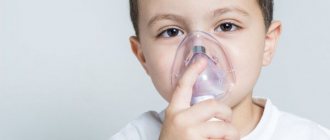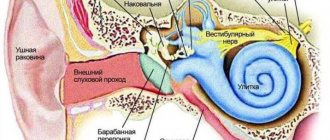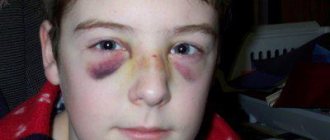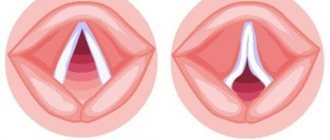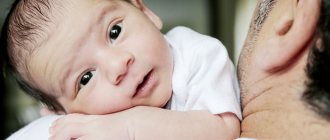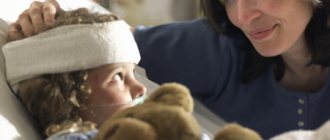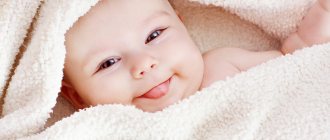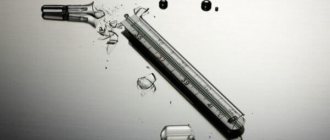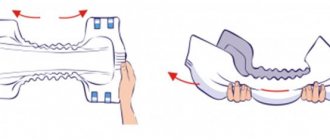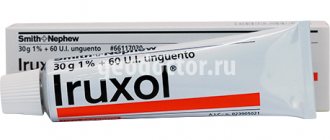Why can an abrasion in a child be dangerous?
Such an injury is a violation of the integrity of the upper layer of skin (epidermis), which appears in response to a blow with a blunt object or remains on the body upon sharp contact with a rough surface. Such damage most often bleeds, but may be limited to only redness and swelling. Regardless of the degree and depth of the wound, the child feels pain and burning.
In themselves, such injuries are not dangerous. However, if you do not give them proper attention and treatment, the skin damage may take longer to heal. An additional danger is the possibility of infection of the wound. In this case, the injury is almost always accompanied by suppuration, local fever, and sometimes even sepsis. In addition, it must be taken into account that pollution can cause dangerous diseases such as tetanus. Therefore, every parent should know how to provide first aid to their child.
Abrasions and scratches
Abrasions and scratches are an integral part of an active life. Each of us has encountered them more than once, at least in childhood - during outdoor games, mastering the skills of cycling, skateboarding, and roller skating. It is very likely that you will receive similar injuries when playing active sports, going out into nature, caring for plants, or harvesting crops in the garden.
Skin lesions contaminated with soil are dangerous in terms of the possible development of tetanus. The danger increases with deeper damage. This is especially important to know for those who are not vaccinated against this infection, or were vaccinated more than 5 years ago.
Providing first aid for abrasions and scratches
The human body has a certain arsenal of evolutionarily determined protective mechanisms that are activated during any injury. This is reflected in certain stages of the wound process, which are characteristic of all types of wounds.
- A fresh abrasion or scratch should first be cleaned of visible dirt and rinsed. This can be done with clean warm water and soap (baby soap, antibacterial soap, or liquid toilet soap are suitable).
- After washing, carefully dry the injury site by blotting it with a clean (preferably sterile) gauze pad. If bleeding continues, the elevated position of the injured limb helps to reduce it.
- This is followed by treatment with an antiseptic solution: a 3% solution of hydrogen peroxide, in addition to the antiseptic effect, helps to further cleanse the wound of impurities and stop bleeding, but you can also use chlorhexidine, a slightly pink solution of potassium permanganate.
- To prevent the development of infection, it is advisable to use antimicrobial agents, for example, apply a sulfonamide drug in powder form, Ranavexim, directly to the damaged surface. Unlike alcohol-containing antiseptics (which can only be used to treat the edges of the wound), Ranavexim does not cause burns to the wound surface or discomfort. The powder absorbs wound discharge, participating in the formation of a scab, which performs a protective function
- If the damage is not large, it is advisable to leave it open to speed up the drying of the crust. If there is a possible risk of tetanus or rabies, or if bleeding continues, seek immediate medical attention (eg, an emergency room).
Signs of complications
If the abrasion (scratch) was not promptly and adequately treated, as well as in the presence of predisposing factors, signs of a developing infection may appear around the third day:
- swelling, redness around the injury
- local increase in temperature (the skin around the abrasion feels hotter to the touch)
- increased pain
- the appearance of purulent discharge from under the scab
- Particularly ominous signs are general malaise, increased body temperature, the appearance of reddish “tracks” on the skin near the injury, and enlargement of nearby lymph nodes.
The listed signs are an absolute reason to urgently seek medical help, since self-medication can lead to dire consequences.
How to treat a child’s abrasions: first aid and treatment
- The first thing you need to do is stop the bleeding. A pressure bandage is ideal for this.
- Next, you need to clean the damaged area of skin. For this purpose, you can use hydrogen peroxide, a weak soap solution, or simply clean running water.
- After you have cleaned the surface of the wound, you need to treat the injured area with an antiseptic to disinfect it. For this purpose, use a solution of chlorhexidine bigluconate. You should not smear the damage with brilliant green or iodine, as such an action can lead to skin burns: only the adjacent undamaged areas and the edges of the wound should be treated with them.
- It is recommended to leave the wound open, as this helps it dry out quickly. If there is a risk of contamination, you can apply a bandage with an bactericidal patch, which must be changed once a day. This will help avoid the wound getting wet and microbes multiplying in its cavity. You should avoid applying cotton swabs, since as the wound dries, the cotton wool will stick to it.
How to properly treat an abrasion or scratch
Avoiding infection in a child’s body is the main goal when any wound appears. First aid for abrasions consists of a simple sequence of actions:
- We wash the wound with boiled or running water to wash off the top layer of dust and dirt.
- We use soap to completely remove all dirt. You can use a gauze swab as an assistant or carry out the necessary manipulations with your hand. Movements should be gentle and careful so as not to cause unnecessary pain to the baby.
- Getting rid of germs. To do this, take a bottle of liquid and pour it over the cut. Make sure that your home always has something to treat a child’s abrasion. 3% hydrogen peroxide or a solution of potassium permanganate (1%) is perfect for this.
Important!
If the wound is deep enough, you should not use hydrogen peroxide: air bubbles can enter the blood and cause an embolism, i.e. blockage of blood vessels.
- Use a gauze pad to dry the abrasion. We carefully blot each corner, paying attention to both the center and the edges of the cut.
- We check that there is no dirt or foreign particles left on the wound and its edges.
- We bring the edges of the abrasion together and seal it with a bactericidal plaster or apply a sterile gauze bandage.
When the wound is in a place that will get wet, you should not use a patch. Otherwise, a humid environment will form and cause accelerated growth of bacteria.
- Praise the baby for his courage and patience, give him a drink of water, reassure him again and hug him tightly.
When the wound begins to heal and dry crusts form, the child feels itching and an unpleasant feeling of tightness. Adults tolerate this, but children find it difficult to control the unpleasant sensations, and at any convenient moment they begin to scratch the affected area, which is why the wound does not heal completely. So that the child does not experience unpleasant sensations and the wounds heal faster, without unpleasant scars from scratching, we recommend that you get acquainted with the “Heal-ka” cream from the My Sun® brand.
How to treat abrasions on a child’s face - on the forehead, on the nose, under the eye?
In addition to the fact that a facial injury attracts the attention of others and causes psychological discomfort to the child, such damage can be dangerous for another reason: it can leave stains and even scars. Therefore, when treating a wound, it is important not to waste time and treat the damage as quickly as possible in the manner described above. You also need to ensure that the child does not scratch the drying crusts, as this may leave scars on the face.
How to smear abrasions on a child’s face so that after recovery there are no traces left of them? We recommend using La-Cri restorative cream for this purpose - a safe non-hormonal product that provides a quick and effective effect.
How to choose the right disinfectant for wounds and abrasions in a child
Ideal disinfectants exist and there are quite a few of them. And to purchase one at a pharmacy, you need to know three main criteria:
- The product should not burn the skin and cause additional pain to the baby.
Archaic brilliant green and iodine for treating children's wounds and abrasions are suitable only if in this way you want to punish the child for mischief and sluggishness - well, they say, you got hurt, so now sit, cry and endure while I “injure” you. I’ll cauterize it properly with iodine or brilliant green...
But if you don’t want to add pain to your baby, forget about brilliant green and iodine; in the arsenal of modern pharmaceuticals there are many effective and painless disinfectant analogues.
- The product should be in a form and packaging that would allow it to be applied without touching the wound (ideally, these are sprays and aerosols);
- The disinfectant must be suitable both for treating the wound itself and for disinfecting its edges, as well as for wiping the hands of the person treating the wound.
As a disinfectant, it is useful for parents to keep one of the following drugs in their home and travel medicine cabinets: Miramistin, Unisept, Chlorhexidine, Octenisept, Baktosin, Gorosten and the like.
Useful tips for treating wounds, bruises and abrasions: what to do if a child falls?
- When going for a walk with your baby, grab a small bottle of hydrogen peroxide, a package of sterile bandages and a bactericidal patch. These things won't take up much space in your bag or pocket, but they will come in handy if your child gets injured.
- It is not necessary to clean the damaged surface with an antiseptic if you don’t have one at hand: simple clean water will also help deal with contamination of the wound if you don’t have hydrogen peroxide with you.
- Don't let your child pick off scabs.
- Keep your baby's nails short so that the dirt that accumulates underneath them does not get into the cavity of the wound, if he still manages to comb and tear off the scab.
Cream for abrasions of the brand Moye Solnyshko® “Heal-ka”
This cream is designed to speed up the healing of minor abrasions and scrapes in children. Approved by pediatricians and can be used for babies starting from 6 months. It is enough to apply a small amount to previously cleansed dry skin of the baby. The cream creates a breathable protective film that “seals” areas with healing abrasions and scratches, protects them from contamination, normalizes the natural protective barrier and relieves unpleasant sensations: itching and tightness.
What to do if a child cuts himself or receives an abrasion, and the wound is deep and the bleeding needs to be stopped?
First aid for cuts and abrasions will be slightly different:
- Ask the child to lift the injured limb upward. If necessary, place him on his back and prop up pillows so that the bleeding area is elevated.
- Wash the wound inside and around the edges. Use soap, peroxide, potassium permanganate, gauze swabs.
- Fold the bandage (or handkerchief) so that the resulting bandage completely covers the abrasion. Using available materials, secure the resulting structure tightly.
- If the bandage is soaked in blood, do not remove it. Place another bandage over it. This will prevent you from accidentally tearing off a blood clot that has formed on the wound.
- If the bleeding does not stop within 15 minutes or you see that medical attention is required, call an ambulance or take your baby to the nearest hospital yourself.
It is considered normal if in the first hours after a wound the abrasion is slightly swollen and the skin around it is red. It is important to promptly change bandages or plaster, examine the wound and use a special ointment or cream so that the cut heals faster.
Restoring cream "La-Cri" - your help in regenerating damaged skin
Restoring cream "La-Cri" is well suited for the rapid regeneration of healing tissues. It is recommended to use it at the stage when the wound has already dried sufficiently and the crust has fallen off.
The cream reduces itching and irritation, relieves redness, fights germs, softens and nourishes the skin. The composition of the product is absolutely safe: it does not contain hormones or fragrances, so the cream is recommended for use even by very young children. Extracts of violet, walnut and string, panthenol, bisabolol and avocado oil effectively fight inflammatory processes, have a calming and healing effect.
Clinical researches
Clinical trials conducted by the company prove the high effectiveness, safety and tolerability of products for daily skin care for children with mild to moderate forms of atopic dermatitis. As a result of therapy, the following was noted after using La-Cri cream for sensitive skin:
- itching and irritation are reduced;
- skin redness goes away;
- the skin is moisturized and becomes smooth.
Sources:
- Cohen Bernard A. Pediatric dermatology, MEDpress-inform, 2015.
- Kildiyarova Rita Rafgatovna, Pediatrician for every day. Guide for doctors, GEOTAR-Media, 2021.
- Anderson, Arici, Azzopardi, Visual neonatology. Guide, GEOTAR-Media, 2021.
